Proof visualisation studio carried out previs and postvis services for Marvel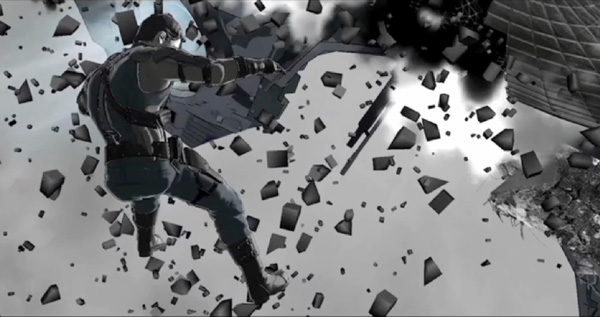
Entertainment’s ‘Captain America: The Winter Soldier’, planning the action
for every major action and VFX scene.
Proof Visualizes ‘Captain America’ from Previs to Postvis |
| Proofvisualisation studio carried out previs and postvis services for Marvel Entertainment’s‘Captain America: The Winter Soldier’. The team spent 14 months planning the previs for the movie, and then another eight months on postvis , taking the opportunity to be involved with every major action and VFX scene. This has been the largest previs and postvis assignment the visualization studio has taken on so far. |
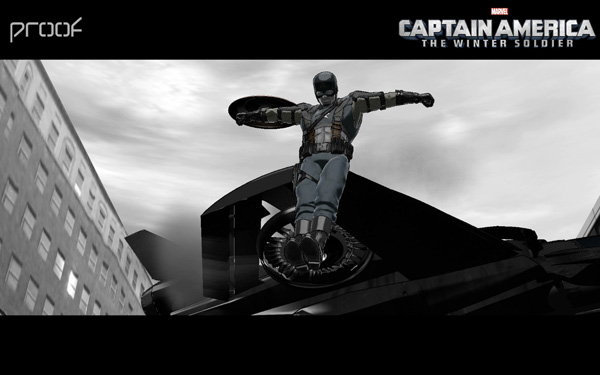 |
|
SymbiosisWorking withVFX supervisor Dan DeLeeuw, the Proof team was involved in the very early planning stages of the film. Because they were dealing with so many unknown factors, they started the work methodically, with only a four-person team. Monty said, “Fourteen months is fairly long but we wanted to start slow and small to help us understand what the filmmakers wanted. On each job there is that process of getting on the same mental wavelength as your clients. Starting with a small team gave us time to achieve symbiosis early. |
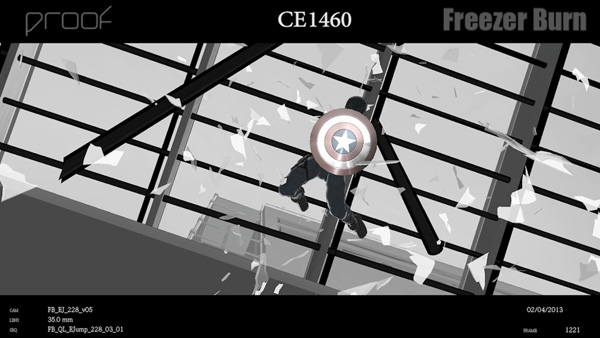 |
|
The third act in particular is a high-action section of the movie that Proof had to first construct in previs, working through a long series of variables to help determine how the sequences would look. Dan DeLeeuw remarked that this was the first time he had been able to see the entire third act of a movie before the production even began shooting. Dan admired the level of style Proof delivered when creating shots. “Anytime I suggested an idea, they could show me several variations on that idea in just a few hours,” he said. |
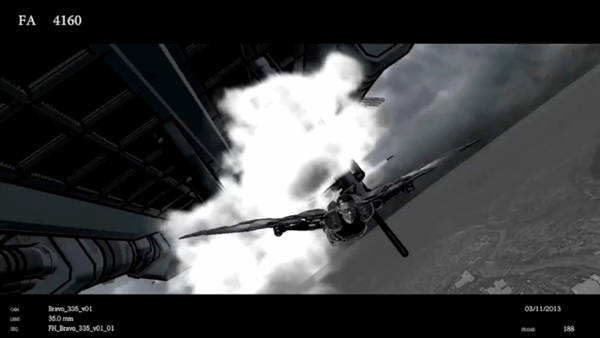 |
Testing ManoeuvresWorking from script usually started with a few concept drawings and storyboards, and a brief. With Dan and the production VFX producer Jen Underdahl they would develop each sequence and prepare it to show the directors, whom they saw at least once a week. Monty said, “I would edit the shots in Premiere and use a temporary sound track for the sequence. Because we were creating sequences from scratch, I didn’t want to work too far ahead or take advantage of the creative freedom we had. We have to make sure we are making their movie, not our own. “Falcon’s sequence began as an animation test with an image of Falcon performing a backflip off of the helicarrier. Dan, the previs artists and I worked out the chase scene until we had a rough version that the directors liked, and they encouraged us to continue fleshing out a sequence with it.” Because they worked alongside production, they could receive answers for any questions straight away. Every move that Falcon and the Quinjet make - stunts, choreography, how the Quinjet functioned - could be checked and approved. Thus, in this case, collaboration led to creativity because, from that animation test, the sequence design became the sequence that appears in the film. When Dan had a particular vision for the missile attack, for example, a custom missile rig was designed and they had the missile working very quickly. From there, Falcon led them to the helicarrier dome and blew his way in. |
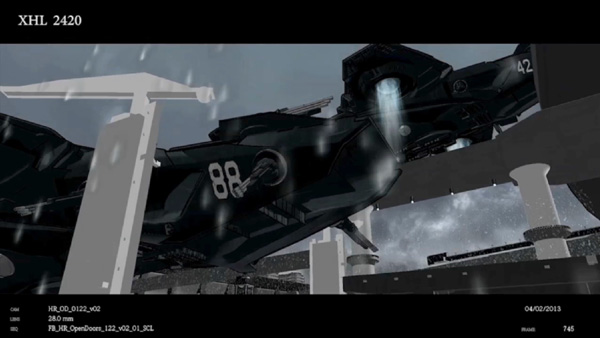 |
VFX Vendors“We then sent the scenes to ILM, where they became very close to what is in the final picture. Kudos to ILM - they made Falcon look amazing,” Monty said. Proof’s relationships with other members of the production were important. To begin previs on CG and FX heavy sequences – especially where post-vis was needed to help fill in blanks for editorial – they had to understand the nature of the visual effects and CG assets, order to make temp shots that would hold up into the final versions of sequences. “Our team comes from many different backgrounds - some are animators, some compositors, with a deep knowledge of visual effects. Dan would direct us on what was technically needed for each shot, and both he and Jen Underdahl have to know how each shot will be executed and what the vendor needs from us. ILM have also been very open about how they used our scene files as a first step to their effects.” |
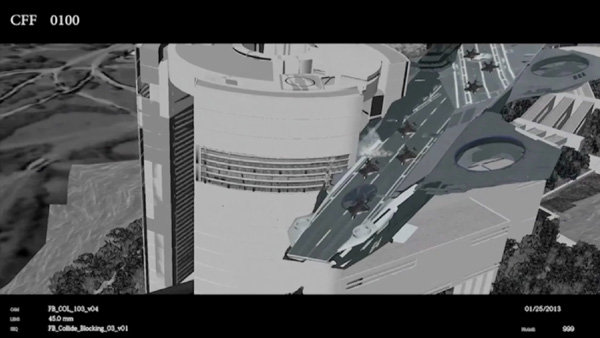 |
|
Previs ToolsProof’s team used Maya for animation and rendering, Adobe Premiere Pro for editing and Blender for simulations. They deliver QuickTime movies to the production, and when preparing techvis they print out hardcopy diagrams for the production to use on set. All members of the production receive the same QuickTimes except the vendors, who would also receive the scene files the movies were derived from. |
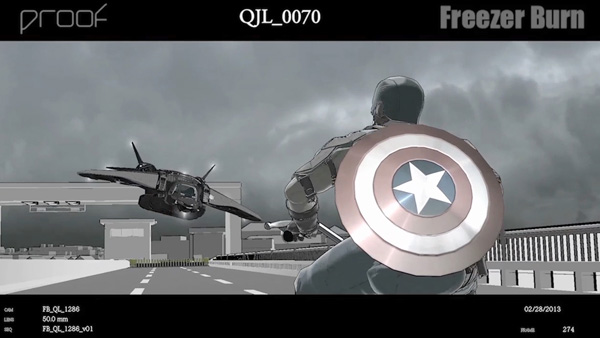 |
|
“We also have our own proprietary character builder, camera rigs and some render tools. Other than that, it was just talented artists animating sequences, finding shots in Maya, and me on the back end editing the sequences together in Premiere. Some of us also use 3d Connexion's space pilot to set up our cameras with a real camera feel.” Rapid ResponseProof also provided a number of postvis shots for ‘Captain America’. Dan explained that previously, watching screenings of films with blank green screens inserted where the VFX shots would eventually appear needed a lot of imagination to envision the story. Now, by integrating postvis, the production can watch the entire film and get a solid understanding of what it will eventually look like for the audience. Postvis supervisor Gunnar Hansen explained that this work involved supplying very rapid responses to the editorial team’s cuts. |
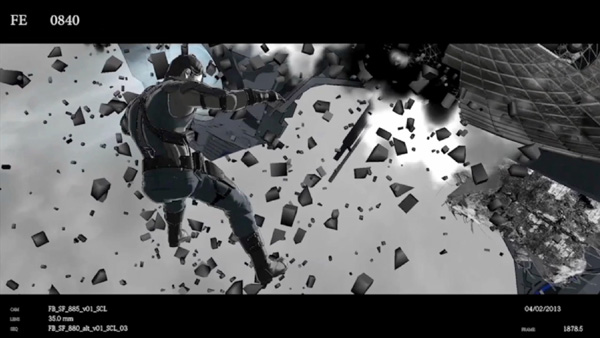 |
|
Working with editorial is another relationship that Proof had to maintain during the project. Monty said, “During the previs process I was editing the sequences. That is how we were able to keep the process efficient. The director and other filmmakers would come into our office. I would show them a version of my edit of the previs and we would make changes on the fly. “The only editorial challenge was the size of the finale section. I had never done a 25 minute edit before, and it made me adjust some pieces of my workflow to accommodate edits of that size in the future. I always work with my team in the room. Some supervisors like to have a separate office, but I like to be in the same room so that I can call them over immediately and show them changes I’ve made. I can also notice when they are going in the wrong direction before too much time is lost. |
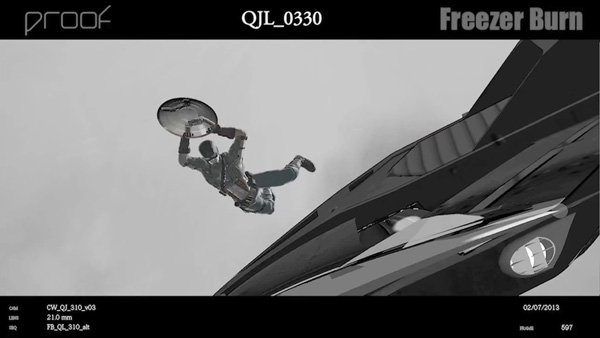 |
|
A Growing ProcessWhen Proof’screative director and founder Ron Frankelstarted the company in 2002, he wanted to advance the use of previs in film production, and now feels that previs has become a critical element in planning action sequences within a 3D environment. Dan DeLeeuw said he has also witnessed a shift in technique over the past few years during preproduction on movies. After first working with storyboards, productions moved to animatics, and now today develop detailed previs, which can help visualize an entire movie’s looks and action before physical production begins. Monty finds that it is still a growing process. “I think the efficient way in which this production used these tools was perfect. They knew exactly what they wanted to use boards, animatics and previs to show. The task of animating a sequence without boards is what every previs artist secretly wishes for, of course, but you have to be careful what you wish for. It can be far safer to execute an image from a storyboard," he said. “When you are making a sequence without storyboards you have to be very careful. You have to make something dynamic that immerses and excites the filmmakers or they may not trust you to develop sequences in the future. Just as important, you need to make sure you don't overdo it. No one wants a big bloated wasteful sequence for no reason. You have to understand that this is not your film. It’s a great responsibility to have any creative freedom in this type of film and you must treat it as such. The biggest challenge is making it shootable, affordable and amazing! But that’s also the most fun part of my job.” www.proof-inc.com |
|
Words: Adriene Hurst |


















